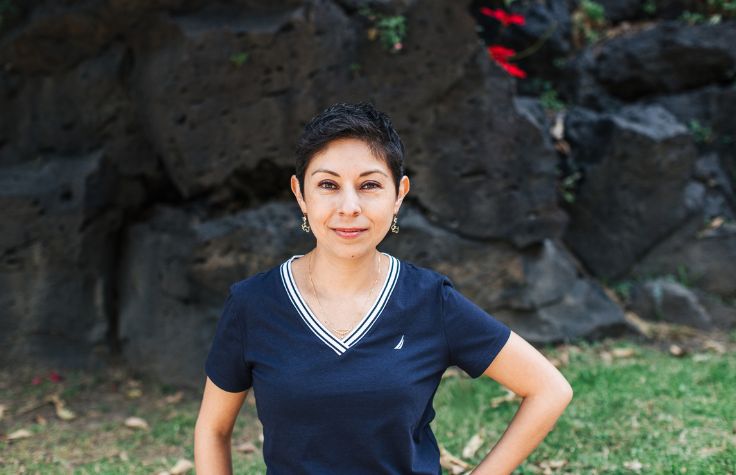
March 28, 2025
Alvaro Hernandez, PhD, has his hands full. As director of DNA Services in the Roy J. Carver Biotechnology Center at the University of Illinois at Urbana-Champaign, he oversees the core facility’s next-generation sequencing (NGS) work. Given that Urbana-Champaign conducts high-impact biomedical, agricultural, and environmental research, the lab’s portfolio covers significant territory.
“We get every type of plant from all over the world; every type of animal, bacteria, fungi,” says Hernandez. “Whatever exists, we sequence it, and we make around 25,000 libraries a year.”
To sequence so many organisms, DNA Services has housed a lot of hardware, including two NovaSeq 6000 Systems, a NovaSeq X Plus System, several MiSeq Systems and iSeq 100 Systems, and other instruments. Recently, the lab beta-tested, and ultimately adopted, the MiSeq i100 Plus System, giving them a new tool to increase their efficiency and better manage the relentless workflow.
Yesterday and today
Hernandez has had a front-row seat for the rapid evolution of genome sequencing. In March 2001, he earned his PhD in animal sciences at Urbana-Champaign and started working at DNA Services. That same month, the International Human Genome Sequencing Consortium published the first human reference genome. The flood gates were now open.
“With the human genome ready, our researchers wanted to sequence everything: pig genomes, cow genomes, bee genomes, all the genomes,” says Hernandez, who has been DNA Services’ director since 2008. “When people talk about next-generation sequencing, they’re usually referencing human DNA, but there’s a whole world of plant, animal, and microbial DNA for us to explore.”
At the time, nobody could afford to sequence an entire genome, so the lab started with RNA transcripts. Hernandez and his colleagues would convert the transcripts into synthetic complementary DNA, clone that, transfect it into bacteria, then grow bacterial colonies and select them for Sanger sequencing. It would take them about a month to create a single library and about a year to sequence 10,000 clones.
Today, DNA Services has a suite of modern NGS tools, so their workflow is a bit different now. Still, there are so many organisms to sequence—many of them with no reference genomes. The team is working to fill that gap.
“In addition to faculty here and at other universities, private companies and researchers send us samples for de novo genome assembly,” says Hernandez. “Many are working on making plants more resistant to drought or salinity or pests, or looking for genomic signatures to help crops and animals grow better.”
The MiSeq evolution
The lab bought its first MiSeq System in 2012, and the instruments have been reliable tools ever since, taking on a variety of applications.
“The MiSeq has always been important to us for titrations, to sequence metagenomic communities, and to support custom amplicons,” says Hernandez. “Some of our customers do amplicons, for example, to study CRISPR genome editing to identify on- and off-target effects.”
Given its long history with Illumina, DNA Services was given an early opportunity to beta test the new MiSeq i100. “The day it was announced, I was at Illumina headquarters with other core directors, and they asked for beta testers. I jumped at the chance.”
At the 2025 Association of Biomolecular Resource Facilities conference in Las Vegas earlier this week, Hernandez talked about his experience during a session titled “The MiSeq i100 in the core facility: Where have you been all my life?”
The lab has used its older MiSeq Systems to balance libraries and do quality control before sequencing them on the NovaSeq 6000 or NovaSeq X Plus. However, the differences in flow cell architecture and platform chemistry between the two instruments had generated challenges. With its patterned flow cells, the MiSeq i100 Series makes library quality control seamless.
Speed is also an asset. On the original MiSeq, Hernandez’s team would run titrations overnight. Now, with four-hour runtimes on the MiSeq i100 Plus, they can perform two runs a day, helping them stay ahead of the workload.
Hernandez was also impressed by the new instrument’s ease of use. The lab has three older MiSeq Systems, which need post-run washes, as well as weekly and monthly maintenance washes. The MiSeq i100 Series does not require post-run or maintenance washes, which saves both time and reagents.
“There’s no washing, zero,” says Hernandez. “We do the run, the run is done, then we load it again. That’s a massive time savings for our technicians.”
Another MiSeq i100 Series refinement is its room temperature reagents. This feature saves time on the front end, since technicians no longer have to wait hours for items to thaw. It may also help free up space in the lab, as Hernandez no longer needs one of their freezers.
Hernandez took on the beta-testing duties himself and was impressed by how easy the MiSeq i100 Plus is to use. “All I have to do is put my library in the cartridge, put the cartridge in the machine, and press start,” he says. “It takes 15 to 20 minutes from beginning to end. Even a busy lab director can do it himself, and I saw it was going to save a lot of labor time. Plus, the machine is like a computer. Take it out of the box, put it on a table, plug it in, turn it on, and that’s it. Done.” ◆


